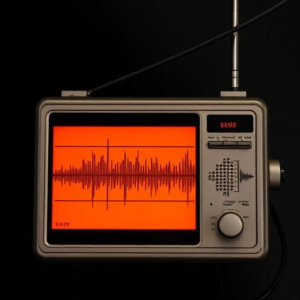What is Signal Modulation?
Signal modulation is the process of changing a signal (usually a carrier wave) in a way that it can carry information. This is important because most signals that carry data (like radio signals or internet signals) need to be “adjusted” to travel long distances or through different mediums (like air, cables, or fiber optics).
To understand this, imagine you’re trying to send a message over a long distance, but you need a way to make sure the message can travel effectively. Modulation is like packing your message into a box (the carrier signal) so that it can travel far without getting lost or distorted.
In simple terms, modulation is how we adjust a signal (usually a high-frequency wave) to carry information like sound, video, or data.

How Does Modulation Work?
Imagine you want to send a simple message, like the letter “A”. Instead of just sending it as-is, you modulate a high-frequency signal (like a radio wave) to carry this information. You can do this in different ways:
- Amplitude Modulation (AM): In AM, you change the strength (amplitude) of the carrier wave to represent information. If the message is “A”, the strength of the carrier wave will vary in a pattern that represents the letter “A”.
- Frequency Modulation (FM): In FM, you change the frequency (how fast the wave moves) of the carrier signal to represent the message. For example, when sending “A”, the frequency of the carrier wave will change at different rates to convey the information.
- Phase Modulation (PM): In PM, the timing or phase of the wave is adjusted to carry the information. The carrier wave’s phase is shifted to represent the data.
What is Signal Demodulation?
Signal demodulation is the reverse of modulation. It’s the process of extracting the original message from the modulated signal. When the signal reaches its destination (like a radio or TV), we need to demodulate it to recover the information that was packed inside.
Going back to our example: imagine you receive a box that has the letter “A” inside, but you need to open the box and read the letter. Demodulation is like opening the box to get the message.
How Does Demodulation Work?
When the modulated signal reaches its receiver (like a radio or smartphone), the receiver needs to recover the original information (like the letter “A”) by reversing the modulation process.
- In AM demodulation, the receiver will measure the changes in the amplitude of the incoming signal to retrieve the original information.
- In FM demodulation, the receiver will measure the frequency changes in the signal.
- In PM demodulation, the receiver will measure the phase shifts in the signal.
Why Are Modulation and Demodulation Important?
Modulation and demodulation are crucial for several reasons:
- Long-Distance Communication: Modulation allows signals to travel over long distances without losing their quality. Without it, signals would get weaker as they travel.
- Efficient Use of Space: Modulation allows us to send multiple signals (like different radio stations or TV channels) over the same frequency band without interfering with each other.
- Noise Resistance: Modulation helps make signals more resistant to interference, making it easier to recover information even if the signal is weak or noisy.
Examples of Modulation and Demodulation:
- Radio: In AM or FM radio, modulation allows a radio station to send music or talk shows over the air. The radio then demodulates the signal so you can hear the sound.
- Television: In older TV broadcasts, modulation carried the video and audio signals to your TV, which would demodulate the signal to display the picture and play the sound.
- Cell Phones: Your phone uses modulation to send and receive voice and data, and it demodulates signals to recover your messages.
Summary:
- Modulation is the process of adjusting a signal to carry information (like sound, data, or video).
- Demodulation is the process of recovering that information from the signal.
- Modulation is used in things like radio, TV, and cell phones to send information over long distances.
- These processes allow us to send clear, strong signals without interference and make efficient use of the available communication channels.











